Colombia hosts over 1,970 bird species – more than any other country in the world
Peterborough Examiner – May 2, 2025 – by Drew Monkman
“Suba, suba, suba. Arriba, arriba, arriba. Pancho, Pancho. Pancho.” Kneeling low to the forest floor, eyes sharp and focused, Carlos Mario was coaxing in one of Colombia’s most sought-after birds: the antpitta. Likened to a tennis ball on stilts, this elusive forest-floor dweller was in no rush to show itself. For almost ten minutes, the eight of us stood silently in the cold mountain air of Rio Blanco, seeing our breath and scanning the undergrowth for movement.
Then, finally, a round-bodied bird with a burnished crown of copper hopped up onto a moss-covered log, just metres away and eagerly snapped up the grubs Carlos had set out. “Wow”, was all we could say.
Without dedicated efforts to habituate these notoriously shy birds to humans, seeing species like the chestnut-crowned antpitta would have been nearly impossible. And Pancho wasn’t alone: over the course of the morning, Carlos worked his quiet magic to draw in three additional antpitta species, offering not only incredible views but also unforgettable photo opportunities. These moments —like so many others on our trip —perfectly captured why we had come to Colombia.
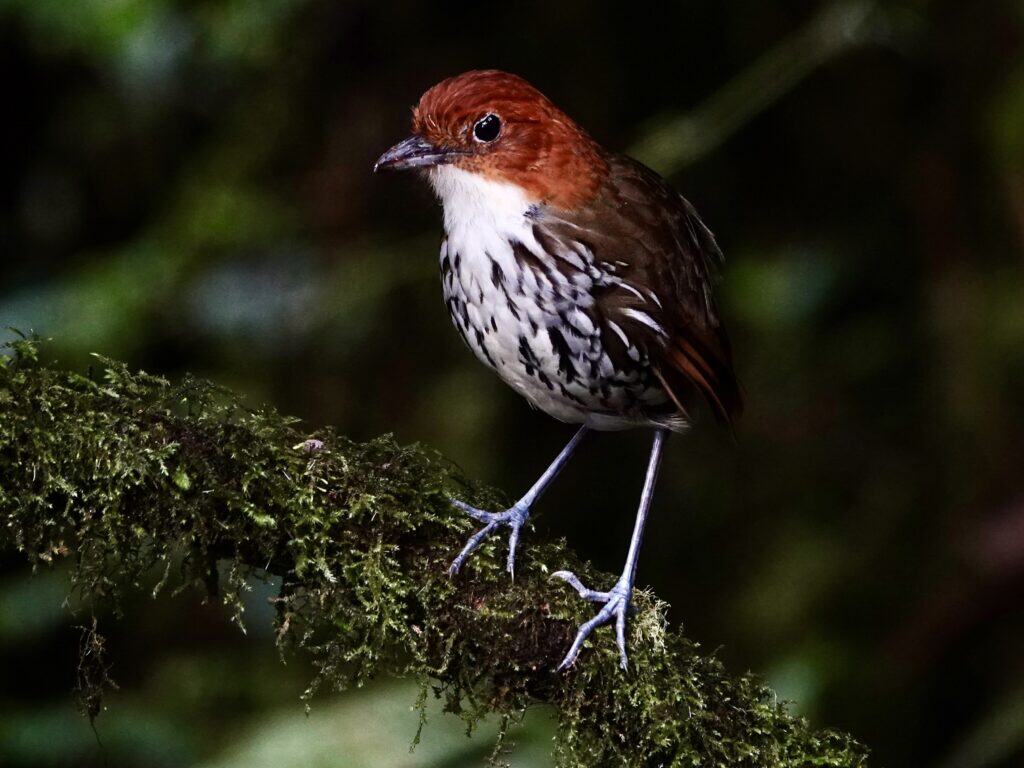
A destination of choice
Last November, I was part of a group of eight, mostly local birders, on a 15-day tour of many of Colombia’s premier birding destinations. Colombia hosts over 1,970 bird species – more than any other country in the world – and twice as many as even bird-rich Costa Rica. Of these, there are no less than 160 species of tanagers, nearly 170 kinds of hummingbirds, over 270 flycatchers and numerous endemic birds found nowhere else in the world. This spectacular species diversity extends to all of the country’s fauna and flora. As just one example, 4,300 species of orchids have been recorded.
Organized by Piculet Birding, the trip included accommodation at ten different locations, meals and transportation — a large van for most of the journey, 4×4 vehicles where the terrain demanded it and, most fun of all, motorcycle-powered wooden carts that took us along an old railway to a nature reserve. We were accompanied throughout by Gilberto Collazos, a certified bilingual guide and expert photographer. At each site we visited, outstanding local guides also helped us find the most sought-after species.
Starting in Cali, we crossed the Western Andes to the Pacific port city of Buenaventura, before heading back east to the lowlands of the Cauca Valley. From there, we traveled north through the coffee-growing region of Manizales to reach Mistrató, located near Tatamá National Park in the Western Andes. The second half of our journey took us to the cloud forests of the Central Andes, where we spent six nights in the Manizales area, exploring some of the finest birding sites in all of Colombia. We then climbed all the way up to 4,100 metres into the other-worldly paramo zone of Los Nevados National Park with its snow-capped peaks and iconic frailejon plants. The return leg took us south to the Buga area for one final night before arriving back in Cali.
The birding routine
Each day we would get up early – usually no later than 5am – and head out to find birds which are most active at dawn – the Andean cock-of-the rock being one unforgettable example. After a hearty breakfast which usually featured traditional arepas – a kind of corn dough patty – we would bird all morning, come back for lunch – wonderful soups! – and either continue birding in the afternoon or travel to the next destination. To warm us up at high elevations, hot “agua de panela” drinks were served. After supper, we would gather to make an official list of all we’d seen that day.
Most of the birding was done along quiet dirt roads in protected areas but also right at the lodges themselves. Almost all of them featured nectar and fruit feeders, usually set up to include flowers like heliconias and moss-covered twigs for more natural looking photographs. We could relax in comfortable shelters out of the rain, all the while sipping fresh Colombian coffee and enjoying spectacular, close-up views of guans, hummingbirds, tanagers, thrushes, euphonias, barbets, and much more. Birding doesn’t get much better than this.
Of hummingbirds and tanagers
At our first destination, the famous Finca La Florida, just 18 kilometres west of Cali, we were immediately overwhelmed by the sheer abundance of hummingbirds, tanagers and show stoppers like toucanets. Spectacular multicolored, golden and flame-rumped tanagers were a constant presence at the feeders, as were blue-winged mountain-tanagers, green honeycreepers and stunning crimson-rumped toucanets with their huge bills.
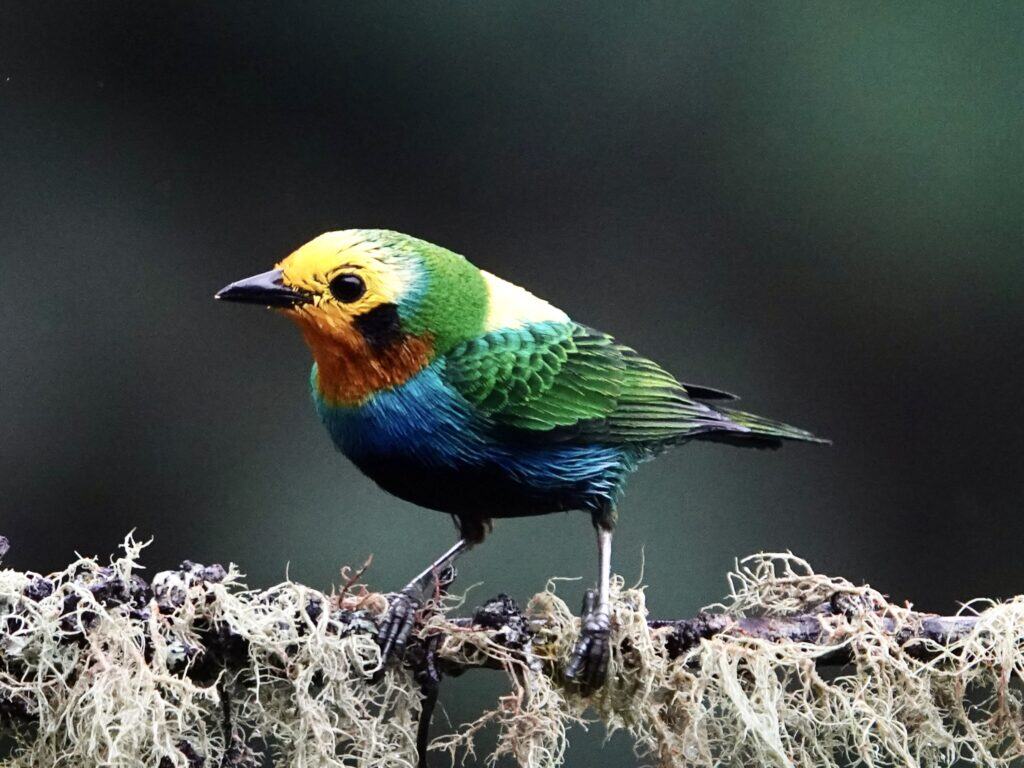
But for many of us, it was the hummingbirds that truly stole the show. Of the 47 species we recorded over the two weeks, more than 20 were seen at Finca La Florida alone. Most were drawn to a clever feeding system—syringes filled with sugar water mounted on sticks—that offered unobstructed views for birders and photographers alike.
Evocatively named species like coronets, Andean emeralds, booted racket-tails, Jacobins, hermits, and woodstars darted through the air in a dazzling, nonstop display of color and motion. Our guide Gilberto, with endless patience, walked us through the key field marks of each species—again and again. It was an exhilarating and unforgettable way to kick off the trip.
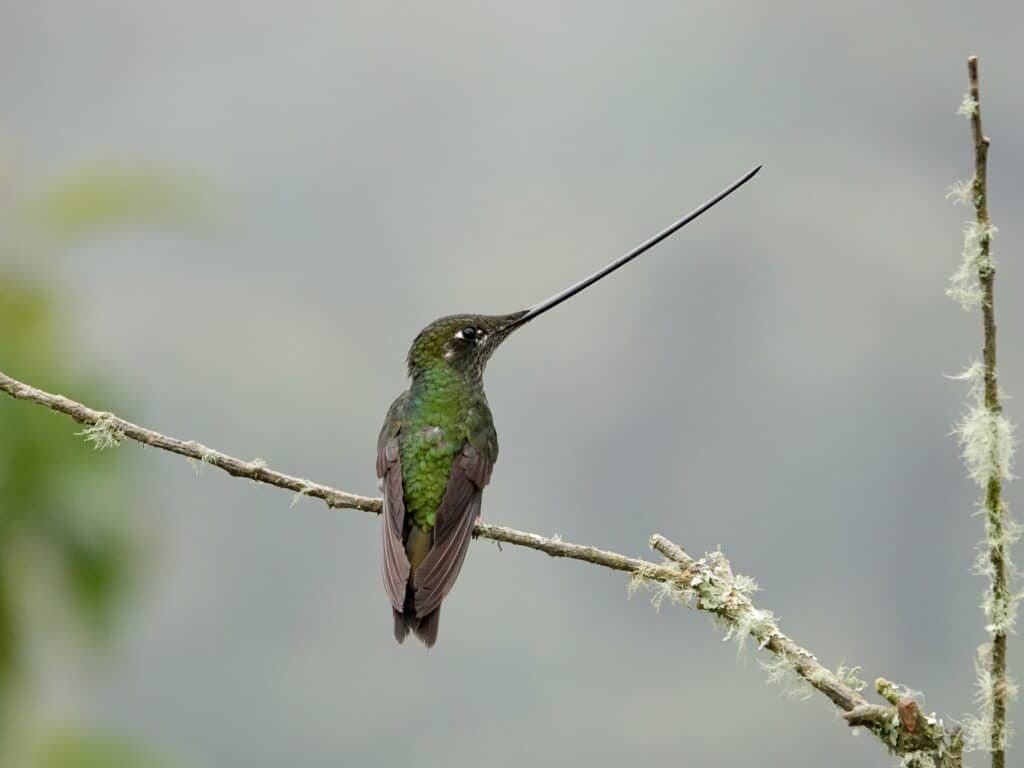
From torrent ducks to mountain-toucans
Among the many unforgettable birds we encountered on the trip, spotting the torrent duck was a particular thrill. These striking, river-dwelling waterfowl inhabit the fast-moving streams of the Andes, perfectly adapted to the rushing currents with their oversized, powerful feet and streamlined bodies.
As dusk crept in, our guide Oswald led us to a bridge spanning the roaring Otún River—but no luck. Undeterred, we climbed back into the van and bounced our way up a narrow mountain road to another bridge. Peering into the fading light, we immediately heard Oswald shout, “I’ve got it!” Sure enough, perched confidently on a midstream boulder, stood a male torrent duck. Saying we were thrilled would be an understatement. Finding this elusive species was far from guaranteed, which made the moment all the more exhilarating.
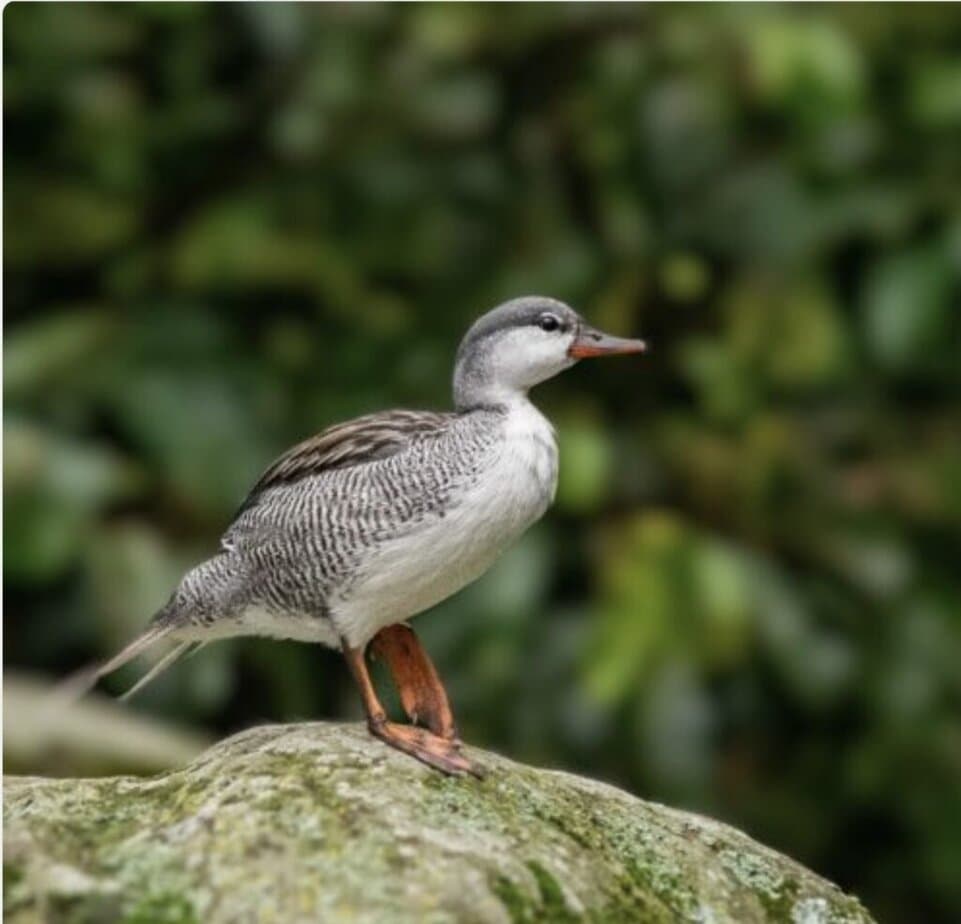
As for otherworldly beauty, few birds matched the black-billed mountain-toucans we saw at destinations like Rio Blanco and Hacienda El Bosque. On one individual perched cooperatively only metres away, I was able to count no less than 13 different colours.
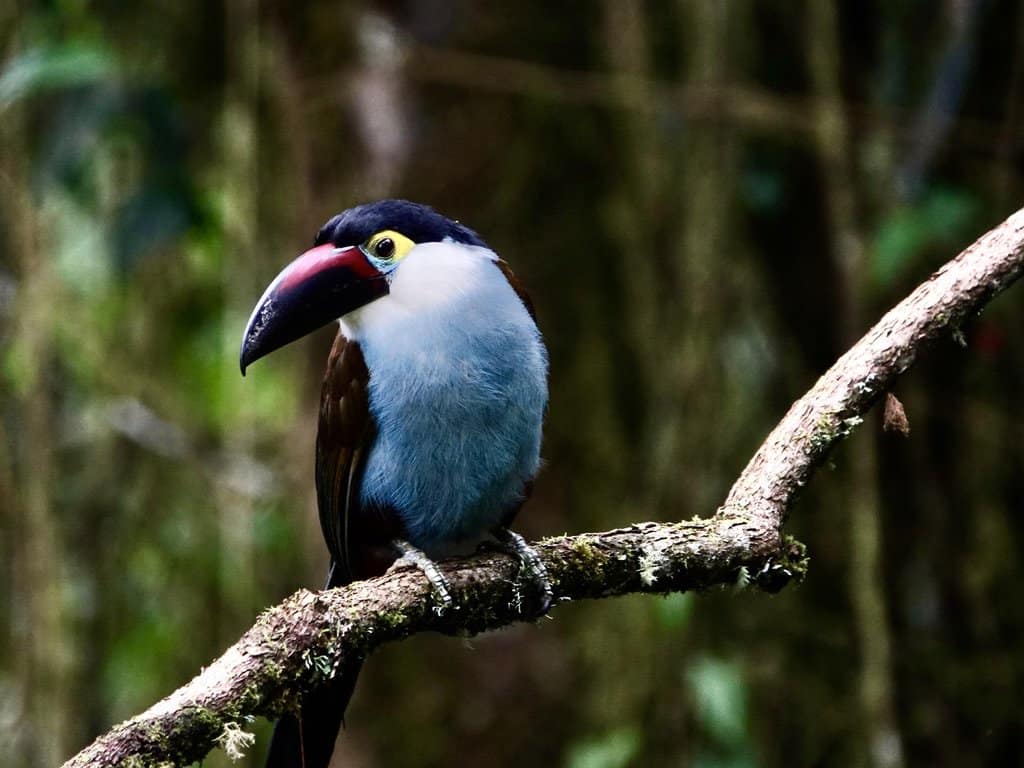
On the road
Travelling through the countryside, Colombia’s rich culture and beautiful landscapes were on full display. At mid-elevations, cloud-shrouded mountain peaks loomed like sleeping giants as we drove past steep hills blanketed with coffee bushes. In the Cauca Valley, there were vast fields of sugarcane.
We were continually impressed by the modern highways, often bordered by majestic saman trees which provided welcome shade. In many areas, the roadsides also came alive with colorful murals celebrating local wildlife and culture. Birds seemed to be the subject of choice.
Cyclists were a constant presence – a testament to cycling’s popularity in the country – and, as always in Latin America, motorcycles zipped by in every direction. Everywhere, we saw chiva buses – traditional open-sided buses painted with vivid colors. Some, called chivas rumberas (party buses), blast out music and even have a dance floor!
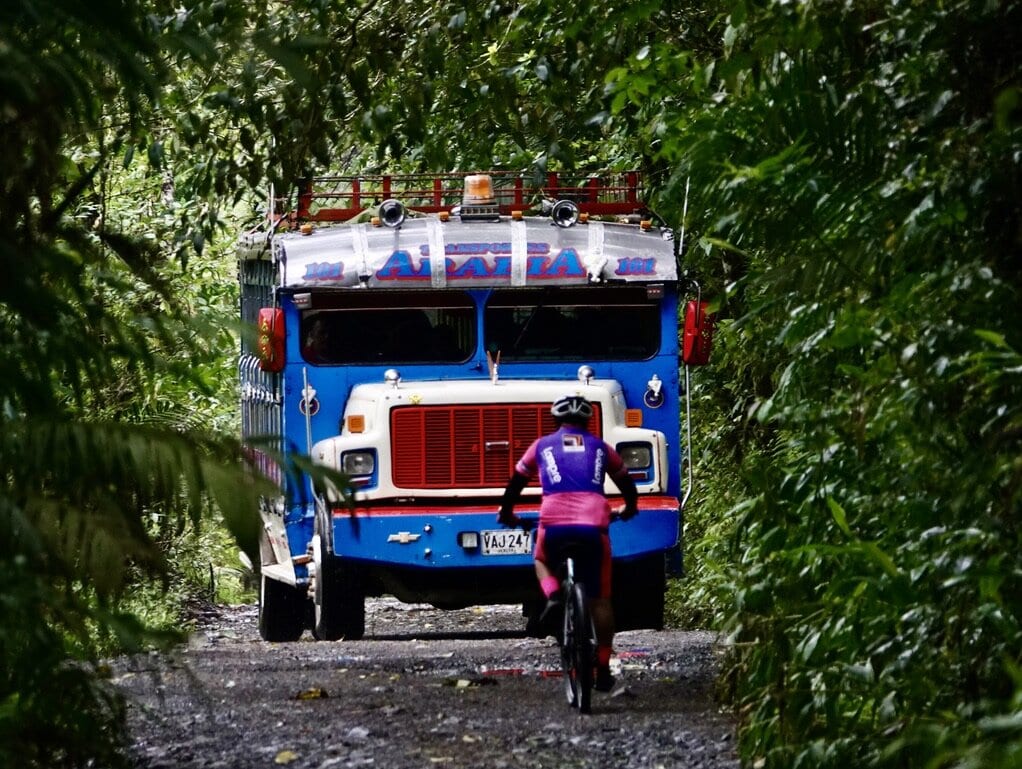
But is it safe?
Colombians are not only warm and welcoming, but also deeply proud of their country and committed to reshaping its global image. Unfortunately, a perception still lingers that Colombia is dangerous —mainly shaped by the violent drug conflicts of the 1980s and 1990s. However, we felt safe everywhere we went. Areas that were once considered off-limits are now open and welcoming to tourists.
The trip was everything I’d hoped for—a perfect blend of my passion for birds, my love of Latin America, and my enchantment with the Spanish language. Our final tally was a staggering 437 species. From hummingbirds with beaks as long as their bodies to tanagers painted in riotous colors, the memories are countless and unforgettable. To be continued.